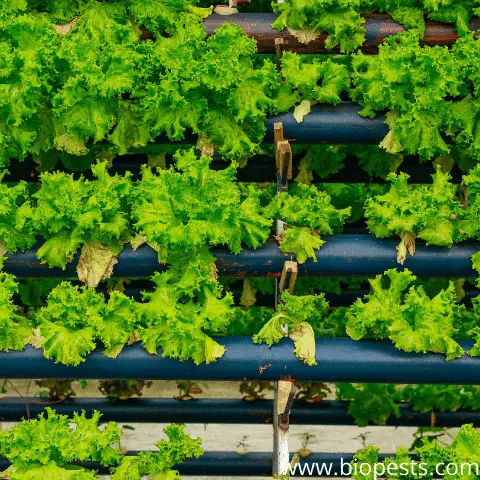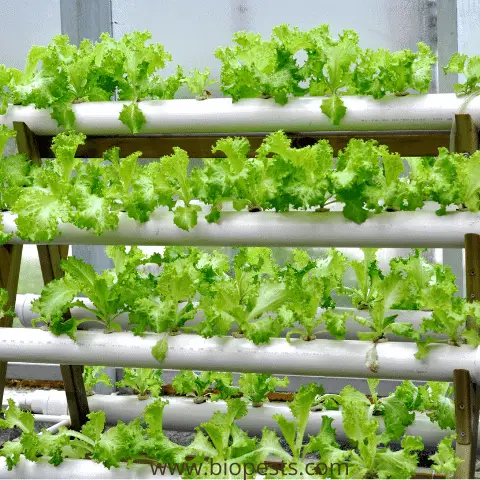Hydroponics farming is different from traditional farming because it employs water as the only growing medium. The plants receive a nutrient-rich solution that fulfills their nutritional requirement for healthy growth. Although hydroponic has been used since the 17th century, it’s not a popular farming practice, but why so?
Hydroponic farming isn’t very popular due to its high initial investment, maintenance, and billing cost. Furthermore, the crops can get damaged easily. Since not many people practice it, there’s limited knowledge of successful practices. For successful yields, expert supervision is crucial.
If you want to know more about hydroponic farming and why it hasn’t attained mainstream popularity, keep reading. I’ll also discuss the future of this agricultural practice.
Why Hydroponic Farming Is Not Very Popular
Most of the crops grown today aren’t done through hydroponic farming. However, more people have started growing their own vegetables through hydroponic farming, as it can be a healthier alternative to other farming practices that may use harmful pesticides.
While more people are looking into hydroponic farming, it’s not popularly done on a big scale. I’ll explain why down below.
Hydroponic Farming Requires a High Initial Investment
A hydroponic system requires a high initial investment to set up. Firstly, the hydroponic facility is very costly to acquire or build because it requires substantial empty spaces. Secondly, you’ll spend a lot of money to construct a water supply system.
You can either choose one of the 6 popular water supply systems or design a customized system that suits your facility and the crops you want to grow.
Moreover, you’ll need funds to make a system of artificial growing lights. Since hydroponics farming is an indoor practice, the artificial growing lights will work as a light source for the plants.
The other expenditure includes buying the testing equipment for pH, temperature, and nutrient content. Added to that, you’ll need a nutrient mix to make the nutrient solution. You can either buy a pre-prepared nutrient mix or create your mix by purchasing different nutrients.
Here is an article I wrote about the costs of hydroponics.
Hydroponic Farming Requires Expert Supervision
The agricultural practice of hydroponics involves a lot of technical challenges to run the system adequately. Hydroponic farming requires constant monitoring and control to avoid any mishaps.
When done on a larger scale, an expert will be needed to supervise the adjustments required in the pH of the water and the system’s temperature. They’ll know when to start/stop the water supply for the plants and their exposure to the growing lights. Moreover, the expert will also know what to do if the plants are damaged or diseases infect them.
Without an expert, it’ll be impossible to manage all the variabilities and ensure the proper growth of the plants. However, as much as experts are helpful, they don’t come cheap.
Depending on the size of your facility, you’d have to spend a considerable amount on hiring experts.
In contrast, traditional farming doesn’t involve complex technicalities, so people prefer the soil-related option.
Monitoring is much simpler and more contained in a small hydroponic system. With a little knowledge, you can manage using monitoring kits such as those sold on Amazon.
Hydroponic Crops Are More Likely To Get Damaged
Plants grown hydroponically are more sensitive to threats than their soil-grown counterparts. In traditional farming, soil prevents the roots from getting exposed to temperature changes, pest attacks, and diseases and acts as a reservoir of nutrients for the plants.
In a hydroponics setting, the plants are without an extra level of protection from the soil. Therefore, if the plants face a nutrient deficiency or get affected by a disease, they’ll die in a few hours if you don’t fix the problem. Since there are high chances of low yields, farmers aren’t ready to experiment in this capital-intensive venture.
There’s Limited Knowledge of Successful Hydroponic Practices
Another important reason for the hesitancy is the lack of knowledge and related research to carry out the practice successfully.
Even farmers who can afford hydroponics farming are skeptical about the practice, mainly due to insufficient literary sources that can help make it a profitable investment.
It gets worse when those who have managed to perform hydroponics successfully decline to share their learning with others to avoid competition. On the other hand, there are many resources on the internet regarding soil-related farming, causing farmers to stick to the traditional practice.

Hydroponic Farming Involves High Maintenance and Billing Cost
A hydroponics system doesn’t only have a high initial investment; it also has a high maintenance and billing cost.
The maintenance cost includes the expenditure to keep the facility clean and hygienic and change any faulty components of the water supply system. It also consists of the cost of maintaining the lighting system operational at all times.
The billing cost is mainly due to the use of electricity. Every hydroponics system contains automatic sections that require electricity to run. Since these costs don’t occur in traditional farming, most farmers rather stay away from it.
Hydroponic Food Have Only Been Recently Certified As Organic
Another reason for the limited cultivation of hydroponics crops is that farmers couldn’t label their products as ‘organic’ until 2017.
Even after the US Department of Agriculture’s (USDA) approval, the Center for Food Safety (CFS) contested their decision and complained in the US federal court. It was in 2021 that the court approved the labeling of hydroponics food as organic.
Since people were only interested in buying organic food, most farmers were afraid that they wouldn’t sell their products in the market successfully. Also, the ambiguity in the certification only made matters worse.
The Future of Hydroponic Farming
As the world’s population increases, the efforts to find new ways to help feed people have also intensified. According to some research, by 2050, we have to double the food production to feed around 10 billion, and the traditional methods won’t be enough to do that.
One viable option is hydroponic farming. Although it has a high initial and maintenance cost, the crops grow faster and yield more than conventional farming.
Moreover, the settlement of the certification problem and the increase in the research regarding hydroponics will draw more people into this practice.
Final Thoughts
The primary reason for the lack of popularity of hydroponic farming is its costly setup and operating cost. Due to its high investment and farming risks, most farmers aren’t fond of it.
Despite its disadvantages, hydroponic farming has its benefits, and it’s a feasible agricultural practice for the future.
Some of the links above are affiliate links, meaning at no additional cost to you, I will earn a commission if you click through and make a purchase.


